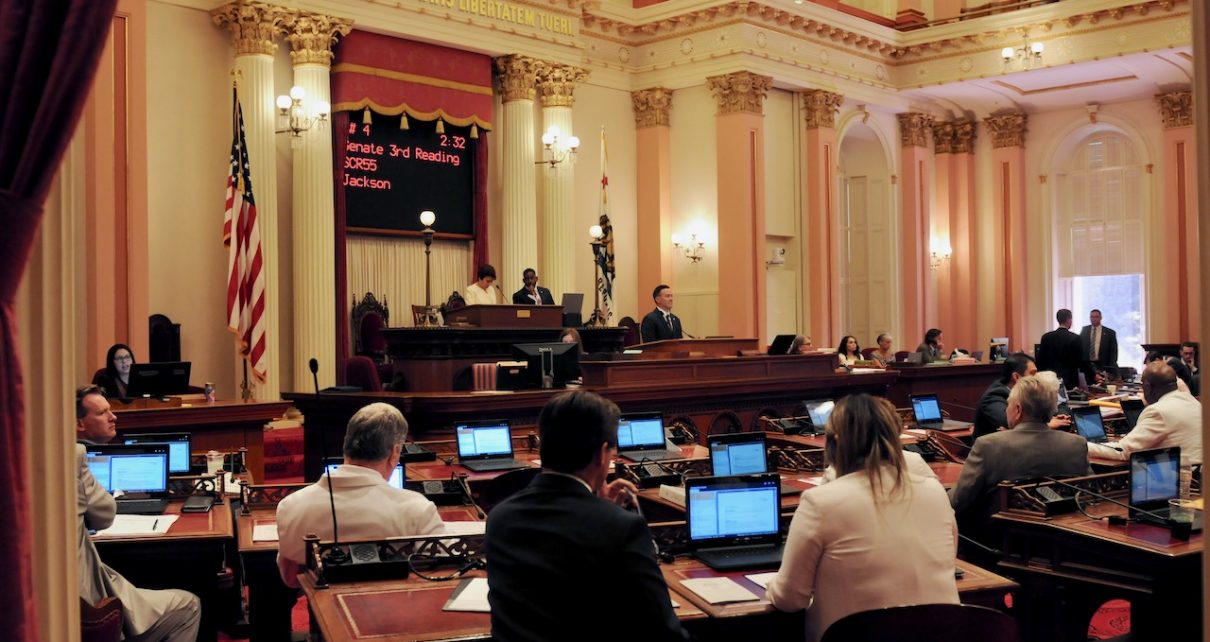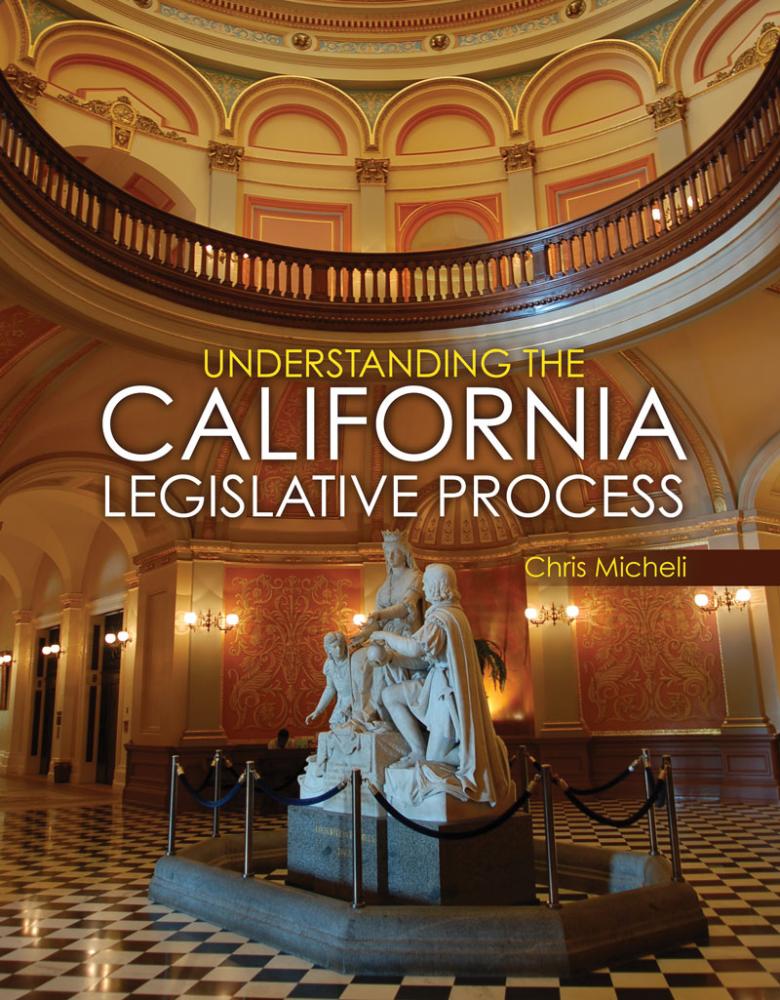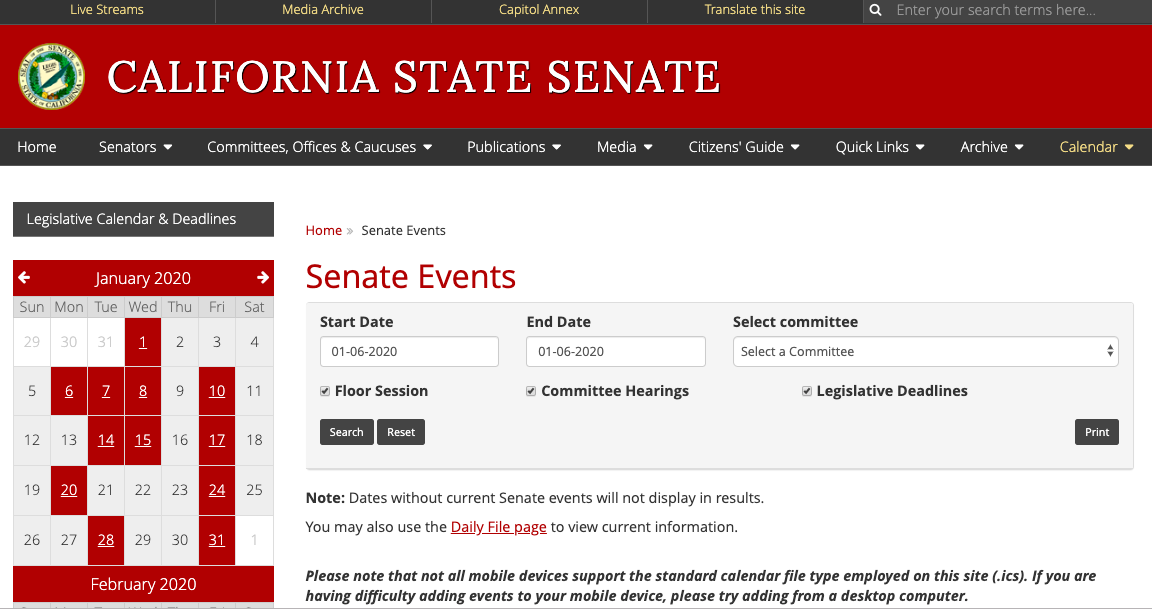
California State Senate. (Photo: Kevin Sanders for California Globe)
Some Frequent End-of-Session Legislative Process Questions
When a bill is amended, the printed form of the bill is proofread by staff to assure that the amendments were inserted properly
By Chris Micheli, August 28, 2021 8:25 am
With the end of the first year of the 2021-22 Legislative Session just two weeks away, we wanted to look at some of the most frequent legislative process questions that frequently arise. Although not exhaustive by any means, the following are some of the frequent questions that arise.
Bill Amendments
Germane Amendments
Germaneness is determined on the floor by a majority vote of the house’s membership. According to the Rules, although the Legislative Counsel may be asked to opine on germaneness, the matter is subject to final determination by the full Assembly or the Senate Committee on Rules.
Hearing Substantial Substantive Amendments to a Bill
Under Joint Rule 26.5, in the case of a Senate bill amended by the Assembly, the amended bill shall be referred to the Senate Rules Committee by request of the Rules Committee Chair. In the case of an Assembly bill amended in the Senate, it may be referred by the Speaker to the appropriate standing committee.
Committee Meetings During the Last Two Weeks of Session
With a rule waiver, committees can meet during this time period. Under Senate Rule 29.10 and Assembly Rule 77.2, dealing with bills that have been substantially amended in the other house and are referred back for a policy committee hearing, those committees are not subject to the prohibition on meeting during those two weeks.
Double Jointing and Contingent Enactment Amendments
There is a clear difference between these two types of amendments. Contingent enactment means there is a section in a bill indicating that it is to become operative only upon the enactment of another measure. Double jointing amendments are amendments to a bill providing that the amended bill does not override the provisions of another bill where both bills propose to amend the same section of law.
Floor Actions
Pass on File and Pass and Retain
An author may choose to “pass on file,” thus temporarily giving up his or her opportunity to take up a measure on the floor. In the Assembly, “pass and retain” prevents the author from taking up his or her bill for that legislative day. The Senate does not recognize a difference.
Letters to the Daily Journal
The Letter to the Journal, generally used to express legislative intent or explain the purpose of a bill, is published in the journal of the bill’s house of origin. It is signed by the bill’s author and requires approval by both the majority and minority leaders in that house as a general rule. If there are objections, a letter can be printed with a majority vote of the body.
Engrossing and Enrolling of Bills
These are two difference processes. When a bill is amended, the printed form of the bill is proofread by staff to assure that the amendments were inserted properly. After being proofread, the bill is “correctly engrossed” and is deemed to be in proper form. Whenever a bill passes both houses of the Legislature, it is ordered enrolled. In enrollment, the bill is again proofread for accuracy and then delivered to the Governor. The “enrolled bill” contains the complete text of the bill with the dates of passage certified by the Secretary of the Senate and the Chief Clerk of the Assembly.
Governor’s Bill Actions
Governor’s Line-Item Veto Authority
Under Article IV, Section 10(e) of the state constitution, “The Governor may reduce or eliminate one or more items of appropriation while approving other portions of a bill. The Governor shall append to the bill a statement of the items reduced or eliminated with the reasons for the action. The Governor shall transmit to the house originating the bill a copy of the statement and reasons. Items reduced or eliminated shall be separately reconsidered and may be passed over the Governor’s veto in the same manner as bills.” The Governor cannot veto budget control language. This authority is sometimes referred to as “blue pencil” authority because years ago the Governor used an editor’s blue pencil for the task.
Governor Acting on Bills Sent to His Desk
The general rule actually is that the Governor has 12 days to act on a measure sent to his or her desk. However, at the end of the yearly session, bills passed after a specified date and in receipt by the Governor after adjournment can be acted upon by the Governor within 30 days. This is provided in Article IV, Section 10 of the state Constitution.
There is confusion about when the clock starts running to trigger the 12-day or 30-day review. It begins when the bill has been delivered to the Governor, not when the Legislature passes the bill. After passage by the Legislature, a bill must still go through the engrossing and enrolling processes before the bill is sent to the Governor. Once the Governor receives the bill, then the clock begins running. As we found in 2016 when a major bill was delayed for more than a month before it was sent to the Governor for action, bills can be delayed in the engrossing and enrolling process.
- Relief from Child Support Orders - December 14, 2025
- County Harbor Improvement - December 14, 2025
- Enforcement of Judgments in California - December 13, 2025




